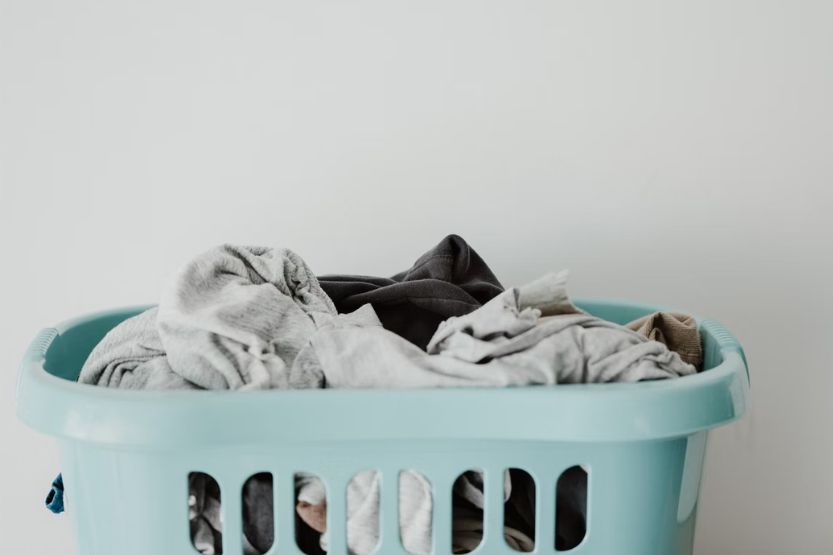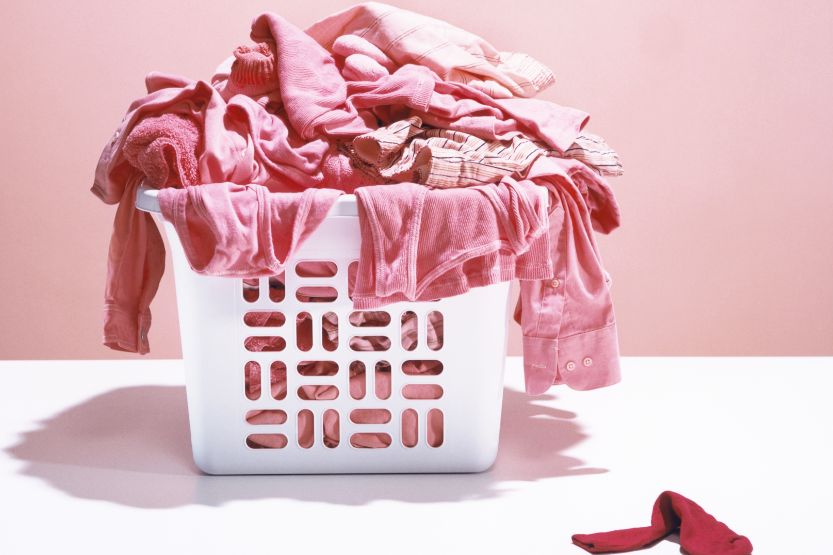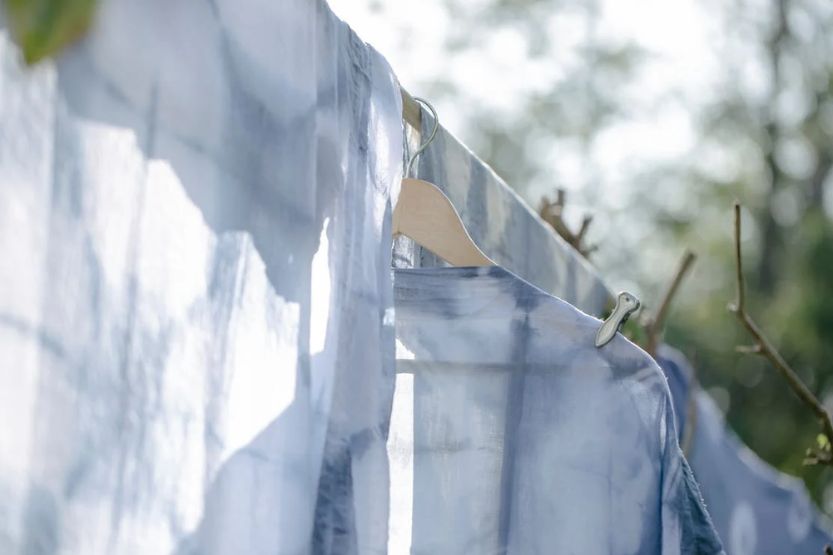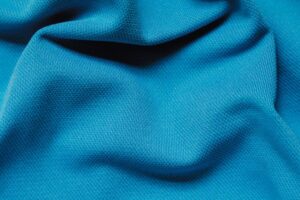When doing the laundry, one common question is, “can you wash and dry whites and colors together?”. Why has it always been said that you should not mix whites and colors in the wash?
You should always wash your white clothes separately from the colored ones to avoid color transfer. In addition, it is also advisable to separate light colors from dark colors. This has been a common practice for generations, and it still holds today.
Read on to learn more about why you should not wash dry whites and colors together. You can also gather some tips to do your laundry like a pro.
Can You Wash and Dry Whites and Colors Together?

You have probably watched a sitcom wherein a lone red sock ultimately led to a wardrobe of pink garments. This is upon accidentally throwing it into a load of white clothes. Now the question is, can you wash whites with colors without problems?
Despite what TV tropes and elders have taught you, colors will not necessarily bleed out of your clothes. They will not transfer to your whites when you wash them together. However, take certain precautions to ensure that it does not happen, like not using bleach for one thing.
Technically, you can wash and dry whites and colors together. However, it is still highly recommended that you sort your laundry beforehand. Even colorfast clothes tend to leach some of their dye into the water. They will inevitably end up in your once bright white clothes.
Can You Dry Whites and Colors Together?
Even drying coloreds and whites together is not advisable. Note that wet bleeding-prone clothes can leach dyes.
In addition, even when dry, a garment prone to bleeding will also be vulnerable to crocking. This means even tumbling in the dryer is enough to transfer colors.
Can you dry all colors together? No, dark colors may still transfer to light colors, especially pastels. In addition, it may be worse to dry colors and whites together.
The reason is that the heat in the dryer will set the dye into the white garments. This means the stain will be almost permanent and harder to remove.
Line Dry Meaning, Symbol, and Vs. Tumble Dry
Why Is It Important to Sort Clothes by Color?
Sorting laundry can be quite a chore, especially if you have a large household. Still, it is worth it in the end. To encourage you to sort your laundry, here are some of the benefits of doing so:
1. Prevents Color Transfer
The main reason, and benefit, for sorting your laundry is to prevent color transfer. It is not true that a lone red sock can turn a large load of white clothes pink. This usually only happens to brand new clothes.
However, it does make the task much easier. For one thing, you can add bleach to your white clothes to make them brighter. This is possible without harming the colors. Speaking of brand-new clothes, ideally, you should wash them alone or with garments of the same color.
2. Allows You to Use Bleach on Whites
Aside from preventing color transfer, separating your laundry load simplifies the task. When you separate the whites from the colors, you can freely use any bleach on the white clothes.
Meanwhile, a mixed load will result in fewer bright whites than those washed using bleach.
3. Keeps Your Clothes from Getting Damaged
Aside from colors, separate your clothes based on the materials used in making them. For instance, never wash your pieces of denim along with your lingerie or other delicate clothing items.
Doing so will result in severe damage to the delicate materials. When sorting your laundry, make it a point to separate the heavy items from the light ones.
4. You Can Use Hot Water When Necessary
Separate the whites from the colored garments so you can use hot water for washing your clothes. This is good as you usually need to wash whites in hot water for several reasons.
One reason is that washing in cold water allows some dirt to be re-deposited into the garments. This may not be that noticeable in colored clothes, but they can easily show in white garments. The residual dirt can make your once bright white shirts grey and dingy.
Another reason is that most of your white clothes are undergarments, like socks, boxers, and the like. For sanitary purposes, you may need to wash them using hot water.
This will help kill the bacteria and germs in the fabric. Moreover, you can sanitize them even further by adding bleach to the detergent.
5. Prevent Clothes from Shrinking
Certain materials do not do well when washed in hot water or even the heat from the dryer. After sorting by color, you can go further by sorting by material. This ensures you will not mix clothes prone to shrinking with those you will be washing in hot water.
What Causes Clothes to Bleed?

Many manufactured garments bleed colors, and they do so in various ways. These include the following:
1. Crocking
Crocking happens when the color transfer occurs through the fabric rubbing on another surface. For instance, you have probably seen blue streaks on your upholstered furniture from your new jeans. This happens because the dye has not properly stuck to the fabric.
You can easily test if a garment is prone to crocking by rubbing it against a piece of white fabric. You can also do so in any light color you have. If you can see color transferred to the rag, the garment is prone to crocking in the wash.
2. Color Bleeding
Color bleeding occurs when the fabric gets wet, and the dye starts to leach out and mix with the water. This is the reason why you should not commit the mistake of leaving a red sock with your white clothes. The red dye from the sock would bleed out into the water and dye the white clothes pink.
Do colors bleed in the washer or dryer? Yes, they can bleed both in the wash and dryer. As mentioned, not all garments are prone to color bleeding. However, do not take the risk of washing them along with your whites.
How to Prevent Color Bleeding?
Aside from sorting your laundry load, how else can you stop the color transfer from your clothes? You can do a few things to lower its risk of happening:
1. Use Cold Water When Washing Your Clothes
Will colors bleed in warm water? It is not always necessary to use hot water when washing clothes. This is more important when it comes to colored garments. The hot water loosens and washes away the mordant in colored fabrics.
The mordant is the substance that keeps color dyes attached to the fibers of colored fabrics. When the mordant is washed, the color will leach out more quickly.
Do colors bleed in cold water? There will be very minimal color bleeding. In most cases, it is not even visible. In addition, cold water keeps the fibers of the fabric closed, thus trapping the dye inside.
Hot, even warm, water opens up the fibers and lets the dye leach out. Almost all detergents nowadays work regardless of using hot or cold water. This means no point in using hot water anymore unless it is for sanitizing purposes.
2. Wash Garments Inside-Out
Turn your clothes inside out when you wash them. This will somehow lessen the color transfer due to friction. If there is any staining due to crocking, it will be on the inside of the garment. Hopefully, this will not be visible from the other side.
3. Wash New Clothes
Newer clothes, especially denim, are much more prone to leaching dye into the water. Wash them separately from the rest of your other clothes for the first couple of times. Ideally, use minimal detergent when you hand wash them to prevent them from fading.
4. Don’t Use Harsh Detergents and Hard Water
Harsh detergents contain a lot of bleach, so they can cause the color to fade. On the other hand, hard water contains harsh elements that cause micro-breakages in the fabric’s fibers. This, in turn, causes dyes to leach out and stain the other clothes.
Again, can you wash and dry whites and colors together? Before doing laundry, you should always separate whites from colors and light and heavy items. Separately dry them too.
How to Fix Color-stained Clothes

No matter how careful you are not to mix colored clothes with whites, you may still slip up sometimes. If that time comes, will you still be able to salvage the color-stained clothes?
Yes, there is still a chance for you to get the color out, but only if you act quickly. This section will give you the steps to save your white clothes. Although you will be using bleach in this process, never confuse chlorine bleach with oxygen bleach.
It is essential to avoid using chlorine bleach, even if it can remove the stains from the affected clothes. The reason is that it can also remove the colors that you want to keep.
Oxygen bleach, preferably in its powdered form, is preferable. This will give you the best results without nearly harming colors as much as chlorine.
Also, do not heat dry garments that have been stained due to color bleeding. The reason is it will set the colors, making them impossible to remove:
1. Check the Entire Load for Staining
Have you noticed the water in the washing machine turning into an alarming shade after the wash cycle? If yes, drain the water, locate the offending garment, and separate it for washing later.
Check each of the pieces of clothing in the load carefully. Check all of the parts of the clothes, especially the joints, for any discoloration. Contrary to popular belief, color bleeding does not turn a whole load of clothes a different shade.
Most of the time, only a part of a couple of clothes would be discolored. You need to inspect every piece of clothing to determine which ones were affected.
2. Wash the Discolored Clothes with Bleach
Now that you have separated the discolored clothes, you need to rewash them. However, this time, use oxygen bleach to remove the discoloration. Use powdered oxygen bleach as it is more effective at removing stains than liquid products.
Don’t worry about the bleach messing up your washing machine. Powdered oxygen bleach dissolves entirely in water. It is not like powdered laundry detergents that leave a powdery substance.
You can use oxygen bleach on both top-loading and front-loading machines. They also work as well in cold water and hot water.
3. Inspect the Washed Clothes Again
After rewashing the clothes, inspect the clothes again carefully. You must soak and rewash if there are still traces of unwanted color.
You can now throw the clothes into the dryer if the offending color is gone. However, to be safe, you should air-dry them until you are sure that the stains disappear.
4. Soak the Stained Clothes
Are the clothes still somewhat stained after the first bleach application? You can clean them further by soaking them in an oxygen bleach solution.
Following the package instructions, mix a solution of oxygen bleach and water in a large wash basin or bathtub. Submerge the stained clothes in the solution and let them soak for at least 8 hours.
Check the clothes for any stains and re-soak in a new batch of bleach solution. You may need to soak the clothes several times to eliminate the stains. However, this is the only way to do it without damaging the garments.
If the bleach is not doing the trick, you can buy a commercially-available color run remover for the stained garments. You can also wash the garments separately using oxygen bleach and a color-catching sheet. Also, you can ask your local dry cleaners if they can do anything with the stain.
How to Get Coconut Oil Out of Different Types of Fabric
Frequently Asked Questions (FAQs)
What Fabrics Are Less Prone to Color Bleeding?
Most clothes made using synthetic fabrics like polyester and nylon are very resilient regarding color bleeding. Synthetic fabrics hold their colors significantly better than natural ones like cotton and wool. That said, you can somewhat safely wash them together with whites if you want to.
Do Vinegar and Salt Help Make the Colors Stay on The Fabrics?
You might have heard that adding salt or vinegar prevents fabric colors from bleeding. However, that is not the case these days.
In the old days, when fabric manufacturing was not that modern, factories would add salt to their fabric dyes. This is to help them adhere better to natural fabrics like wool and cotton.
Vinegar, on the other hand, was for dying synthetic fabrics. Salt and vinegar would not help these days as modern chemical mordants work better.
How Can You Tell If a Piece of Clothing is Prone to Color Bleeding?
By looking at their labels, you can easily tell what pieces of clothing are prone to color bleeding. If you find the following warnings, the garment is prone to color bleeding:
- Color Rubs Off
- Do Not Use Detergent
- Turn Inside-Out to Wash
- Wash Before Wearing
- Use Cold Water Only
- Handwash Only
These are some clues you need to look for when shopping for new clothes. If you don’t see these warnings on the label, you can safely assume it is colorfast. However, to be safe, you should still wash it with other colored clothes.
Are Color Catchers Reliable?
They are not 100% reliable. However, they catch a significant amount of dye from the water before they stain your clothes. There is no harm in using these products. However, you should only treat them as fail-safes if you accidentally leave a brightly-colored sock in your white pile.
Can You Wash All Colors Together?
No. Aside from sorting whites and colors, you should sort your colored garments further into light-colored and dark-colored piles. Color transfer can still happen from dark to light clothes.
In Closing – Can You Wash and Dry Whites and Colors Together?
To answer the question, yes. You should always wash your whites separately from the colored garments. In addition, you should wash light colors from the darks as color transfer can still happen. Sorting laundry by color is an age-old practice that still holds today, mainly because it is true.
Have you just fled the nest, and is it your first time doing your laundry? Then separating the whites from the colors is the one rule of thumb that you should never forget.
Yes, sorting your dirty laundry can be quite a chore. Still, it is better than having your whites accidentally dyed another color.
Read next:



